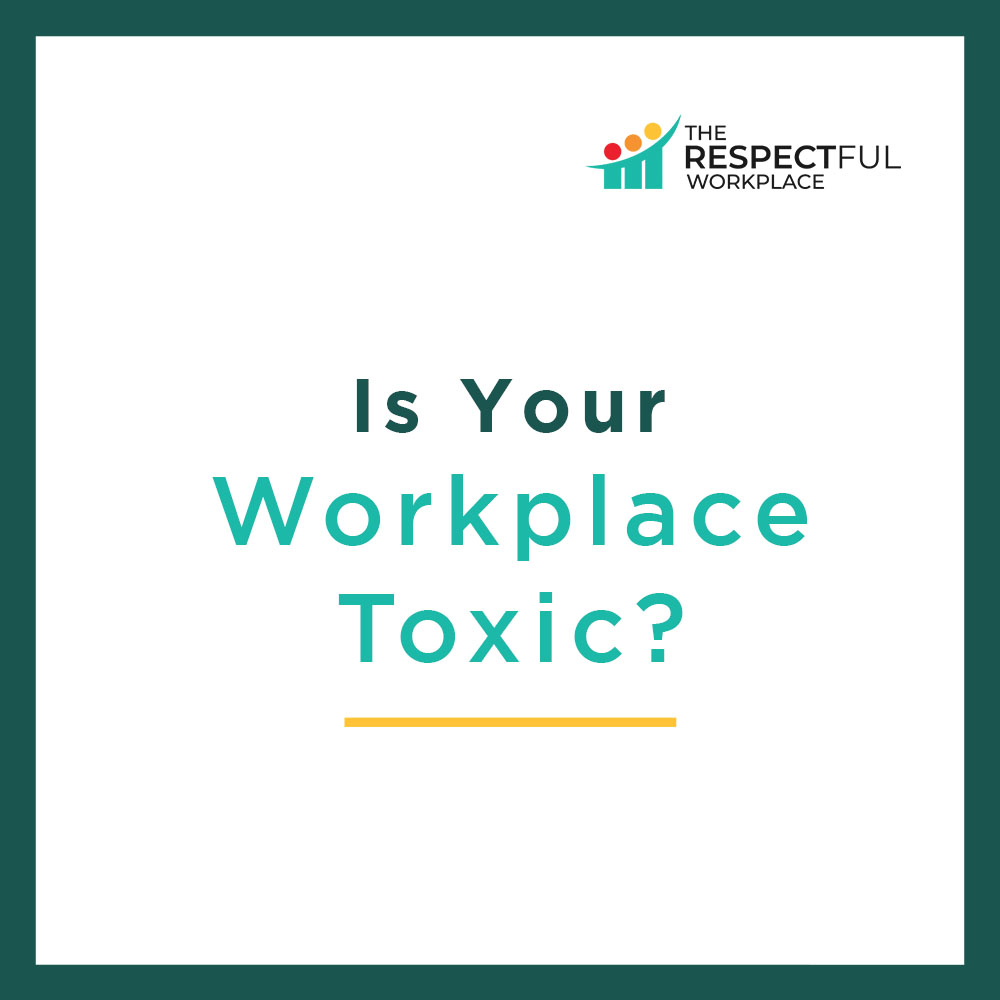Is Your Workplace Toxic?
Think of a beautiful lake…. Clear & pristine.
Water so clear you can see the bottom of the lake floor and all the fish swimming around… You can see the rocks below….
Before you start to fish for tonight's dinner you reach down, cup your hands and drink in the beautiful mountain spring water…
But then you look up and across the lake someone is dumping gallons of raw sewage into it - and now, it’s polluted, fouled.
Sure, maybe you’d still go boating on it (after all, it’s not 3 Mile Island).
But it would still bother you knowing all that toxic waste is in the water and you’d be nervous about being in it.
Now imagine if you had to rely on the fish from that lake for your food, or the water to drink. You might not die, but you’d probably get pretty sick. And suddenly that lake isn’t such a great place anymore.
 Like pollution, inappropriate and disrespectful workplace conduct fouls a work environment. This unhealthy work environment leads to physical and mental illnesses like high blood pressure, headaches, depression, heart disease, cancer and the list goes on.
Like pollution, inappropriate and disrespectful workplace conduct fouls a work environment. This unhealthy work environment leads to physical and mental illnesses like high blood pressure, headaches, depression, heart disease, cancer and the list goes on.
Literally, an abusive and disrespectful workplace can make you SICK!
All this thwarts the possibility of a productive - and prosperous - workplace.
Are any of your employees engaging in these types of behavior?
- Having a condescending attitude toward others;
- Gossiping
- Shaming others for asking to have their boundaries respected;
- Showing up late to meetings;
- Looking at your cell phones during meetings or conversations
- Breaking the confidentiality of private information
- Demeaning or yelling at a subordinate in front of others
- Not giving clear directions to employees
- Not giving credit to employees for work well done
- Not accepting responsibility for your errors/mistakes.
- Using profanity;
- Discussing private body parts (yours or someone else’s);
- Discussing private sex or dating life, or that of someone else;
- Violating someone’s physical space boundary Asking probing, personal, questions about a co-worker’s private life;
- Undermining or blaming staff or a colleague;
- Taking credit for someone else's work
- Trying to convert others to your political or religious beliefs
- Opening someone else's mail
- Telling offensive jokes
- Not pulling your own weight
Believe it or not the above examples may be rude, insensitive or grossly inappropriate but most of the time it’s not ILLEGAL because it isn’t happening because of someone’s race, or age or gender or any of the other protected classes.
The boss yells at everyone, men and women alike. The coworker gossips about everyone – black and white. In other words they work for, or with, Equal Opportunity JERKS.
But just because it’s not illegal it doesn’t mean it should go on. Because toxic work environments are NOT productive and prosperous ones. And they lead to less commitment by employees, high turnover, and possibly expensive lawsuits.
The Respectful Workplace has programs to help companies increase employee awareness of their behaviors and the impact upon their co-workers and in so doing hopefully elevate everyone’s emotional intelligence and by doing so eliminate these, and other, toxic behaviors and elevate the culture of the workplace. And hopefully minimize the risk of future lawsuits by employees.
Discover the right workplace training for you and your business today, with a FREE workplace consultation when you CLICK HERE to contact me.
#ToxicBehavior #HRTraining #RespectfulWorkplace #EmploymentLaw
Think You Can’t Afford Sexual Harassment Prevention Training?
You Can’t Afford to NOT Have It.
We’ve all seen the recent media coverage of inappropriate conduct and outright sexual harassment by high-profile individuals. And now we have the #MeToo Movement. (And I fully support it, by the way.) Here are some facts that may shock you about the prevalence of sexual harassment in the workplace.
1. In FY 2015 Forty-five percent of the EEOC’s harassment claims were sex-based.
In that year the EEOC received over 28,000 harassment claims for both private and public employers (e.g. government). A majority of this 45 percent were sex-based claims. Other types of harassment claims included harassment on the basis of race, disability, age, national origin and religion. Even though many harassment claims go unreported those that are reported are overwhelmingly due to sexual harassment. If someone is asking for a sexual favor, making any kind of sexual advance, sexual comments or doing anything in a sexual nature at work, it would be considered harassment.
2. At least 25 percent of women have been sexually harassed at work.
Let that sink in. At least one in four women experience sexual harassment in the workplace. Some studies have determined the actual number is even higher. Regardless, even at 25 % the number of women who experience sexual harassment in the workplace is still disturbingly high and totally unacceptable.
3. Sexual harassment claims cost businesses hundreds of millions of dollars.
In 2015, the EEOC recovered $164 million for workers alleging harassment at work. But that number doesn’t even include money recovered by private attorneys representing employees! In addition to the monetary settlements and award, employers face staggering legal fees not to mention a seriously disrupted workplace due to having to deal with the inconvenience of litigation.
The level of awareness of sexual harassment in the workplace has risen to a point that any employer who doesn’t take pro-active action to prevent it is doing so at their own peril It is more important than ever that employers take steps to ensure their employees are well trained on this subject in order to ensure employees are working in an environment where they feel safe and valued.
And if that wasn’t enough incentive, did you know that companies with a solid anti-harassment policy that all employees are aware of, and which has a clear and procedure through which victims of harassment can report it have an added defense to claims of supervisors’ harassment of their subordinates. This is because if the employee fails to avail herself of the reporting procedure she loses her right to sue. As a result, the time and money a company spends on this training can not only prevent harassment from happening, in the first place, but if it does happen, it can assist a company in mitigating the damage through an immediate response to the complaint, and in the event the employee fails to report it, it can help the company to avoid liability entirely. Quite simply, it is a layer of protection no company can afford to not have.

